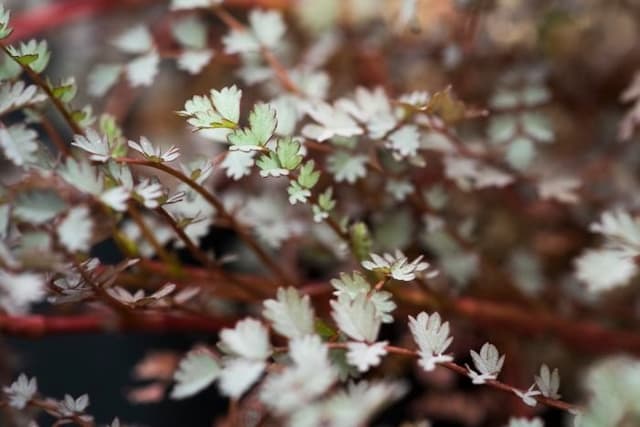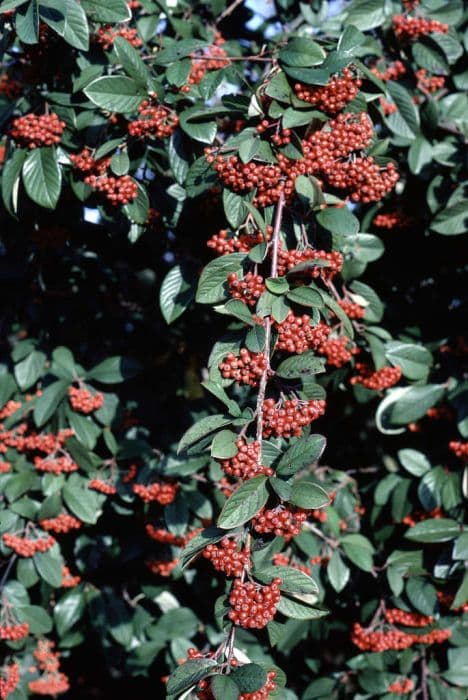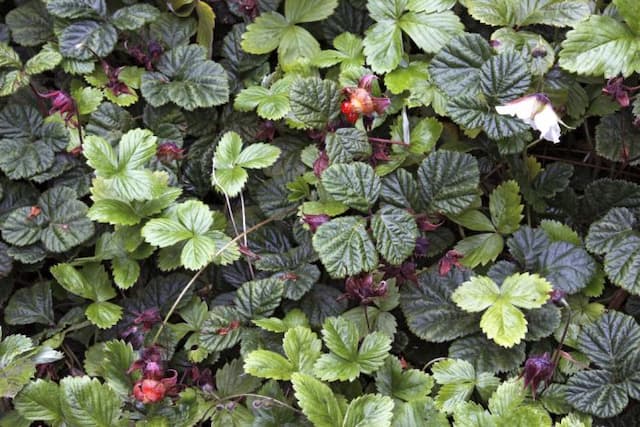Crab apple 'Royalty' Malus 'Royalty'



ABOUT
Crab apple 'Royalty' (Malus 'Royalty') is a cultivar of the crab apple tree, a small tree that is native to the temperate regions of Europe and Asia. It is known for its attractive purple-red leaves, which turn shades of orange and yellow in the fall, and its purplish-red flowers, which appear in the spring.
Crab apple 'Royalty' is a small tree, typically reaching heights of 20-30 feet and spreads of 15-25 feet, and is hardy in USDA hardiness zones 4-8. It is a popular ornamental tree and is often grown in gardens, parks, and other public spaces.
For a long time, the fruits of Crab apple 'Royalty' were not considered edible and were only planted for decorative purposes. However, now the fruit is actively used in cooking, particularly in recipes that use a lot of sugar and other varieties of apples.
About this plant
 Names
NamesFamily
Rosaceae
Synonyms
Crabapple trees, Purple-leaved crab apple, Purpleleaf crab apple, Royalty crab apple
Common names
Malus 'Royalty', Malus × hybrid
 Toxicity
ToxicityTo humans
All apples contain some level of toxins, including cyanogenic glycosides, which are the building blocks of cyanide. Ingesting the core of an apple, which contains these toxins, can lead to poisoning in humans.
However, it is unlikely that a small dose of cyanide from eating the core of an apple would cause harm, except possibly causing an upset stomach.To pets
There is no information available about the toxicity of Malus 'Royalty' to animals.
But all apples contain some level of toxins, including cyanogenic glycosides, which are the building blocks of cyanide. Ingesting the core of an apple, which contains these toxins, can lead to poisoning in animals.
However, it is unlikely that a small dose of cyanide from eating the core of an apple would cause harm.
 Characteristics
CharacteristicsLife cycle
Perennials
Foliage type
Deciduous
Color of leaves
Purple-red; orange and yellow in the fall
Flower color
Purplish-red
Height
Up to 30 feet
Spread
Up to 25 feet
Plant type
Tree
Hardiness zones
3
Native area
Europe and Asia
Benefits
 General Benefits
General BenefitsMalus 'Royalty' is an attractive tree that can add beauty to your landscape with its colorful foliage and flowers;
As a small tree, Malus 'Royalty' can provide shade for your outdoor living spaces or for the plants in your garden;
The flowers of Malus 'Royalty' can attract bees and other pollinators, which can help to improve the health and productivity of your garden;
The purple-red leaves of Malus 'Royalty' turn shades of orange and yellow in the fall, providing a splash of color to your landscape;
Malus 'Royalty' is a hardy tree that can tolerate a range of growing conditions, making it a good choice for gardeners in many different regions. Other Uses
Other UsesWith its small size and attractive flowers and foliage, Malus 'Royalty' could potentially be grown as a bonsai tree;
While crab apples are not typically considered to be the most palatable of fruits, they can be used to make jams, jellies, and other preserves;
The fruit of Malus 'Royalty' can be used to make a natural dye for fabrics or other materials;
The flowers of Malus 'Royalty' are known to have a strong, sweet fragrance that can help to repel insects.
Interesting Facts
 Plant Symbolism
Plant SymbolismIn some traditions, crab apples are associated with love and relationships due to their small size and delicate beauty;
In some Native American traditions, the crab apple tree is seen as a protective force, and its branches are believed to ward off negative energies;
The crab apple tree is known for its ability to adapt and thrive in a range of growing conditions, which some people may interpret as a symbol of transformation and resilience.
 Water
WaterAs a general rule, crab apple trees should be watered deeply once a week, or more frequently during periods of prolonged drought. Water the tree at the base of the trunk, taking care to avoid getting water on the foliage.
Be sure to water the tree slowly and evenly, allowing the water to penetrate the soil and reach the root zone. Avoid overwatering, as this can lead to root rot and other problems. Light
LightMalus 'Royalty' prefers full sun (6-8 hours of direct sunlight per day) but can tolerate partial shade. In general, it is best to plant crab apple trees in an area where they will receive morning sun and afternoon shade.
If you are growing Malus 'Royalty' indoors, place the tree in a sunny location near a south- or west-facing window. Temperature
TemperatureMalus 'Royalty' is hardy in USDA zones 4-8, which means it can tolerate a wide range of temperatures. In general, crab apple trees prefer cool temperatures and can tolerate freezing temperatures in the winter.
Malus 'Royalty' prefers cool to moderate temperatures, and can tolerate temperatures as low as 40°F. Pruning
PruningCrab apple trees benefit from regular pruning to remove dead, diseased, or damaged branches, as well as to shape the tree and promote healthy growth. Avoid pruning more than 25% of the tree's canopy in any given year.
 Soil
SoilMalus 'Royalty' grows best in well-draining, fertile soil with a pH between 6.0 and 7.0 (slightly acidic to neutral).
Avoid planting Malus 'Royalty' in heavy, clay soil, as this can lead to poor drainage and root rot. Repotting
RepottingMalus 'Royalty' generally does not need to be repotted frequently, and can be grown in the same pot for several years.
Repot the tree into a slightly larger pot if it becomes root-bound. The best time to repot Malus 'Royalty' is in the early spring, before the tree starts to actively grow.
Choose a pot with good drainage holes. Humidity & Misting
Humidity & MistingMalus 'Royalty' prefers moderate humidity levels, but is generally tolerant of a wide range of humidity levels.
Increase humidity by misting the leaves with water or using a humidifier.
Reduce humidity by providing good ventilation and placing the tree in a well-draining soil mix. Suitable locations
Suitable locationsIndoor
Malus 'Royalty' is a small tree that can be grown indoors, but it will need plenty of sunlight and proper care in order to thrive.
Outdoor
Malus 'Royalty' is a small tree that can be grown outdoors in a sunny spot with well-draining soil.
Choose a sunny location with well-draining soil for Malus 'Royalty'. The tree grows best in soil with a pH between 6.0 and 7.0 (slightly acidic to neutral). Avoid planting the tree in a spot that is prone to standing water or heavy, clay soil.Hardiness zone
4 - 8 USDA
 Life cycle
Life cycleMalus 'Royalty' seeds need to be exposed to cold temperatures in order to germinate. They can be sown directly in the ground in the fall, or stratified (placed in a mixture of damp peat moss and sand) in the refrigerator for several weeks before planting.
Once the seeds germinate, they will grow into seedlings that have two cotyledon leaves (seed leaves). As the seedlings grow, they will produce their first true leaves and begin to develop a root system.
As the seedlings grow into saplings, they will begin to produce flowers and fruit. The saplings will also grow taller and develop a stronger root system.
Once the sapling reaches maturity, it will become a full-sized tree that is capable of producing flowers and fruit on a regular basis. The tree will continue to grow and mature over the course of its life.
Eventually, Malus 'Royalty' will reach old age and begin to decline. The tree may produce fewer flowers and fruit, and may become more susceptible to pests and diseases. When this occurs, it may be necessary to remove the tree and plant a new one. Propogation
PropogationPropogation time
Fall - spring
By SEEDS:
Malus 'Royalty' can be propagated from seed, but this method is less reliable and may produce trees that are not true to the parent tree. To propagate from seed, collect the seeds from ripe fruit, and plant them in a pot filled with soil. Keep the soil moist, and the seeds should germinate within a few weeks.
By ROOT CUTTINGS:
Root cuttings can be taken in the winter when the tree is dormant. Cut a small piece of the tree's root system, and plant it in a pot filled with soil. Keep the soil moist, and the root cutting should produce new shoots and roots within a few weeks.
By LAYERING:
Layering is a method of propagation that involves bending a branch of the tree down to the ground and covering it with soil. The branch will eventually produce roots, and once it is rooted, it can be cut off from the parent tree and planted as a new tree.
By GRAFTING:
Grafting is a method of propagation that involves attaching a piece of a desired tree (the scion) onto the rootstock of another tree. This can be done using various techniques, such as cleft, whip, or tongue grafting. Grafting is a more advanced method of propagation and requires a certain level of skill and experience.
 Pests
PestsAphid, Japanese beetle, Apple scab, Coddling moth, Apple maggot
 Diseases
DiseasesRoot Rot, Powdery mildew, Fire blight


![Indian hawthorn [Enchantress]](/_next/image?url=https%3A%2F%2Fplants-admin.emdemapps.com%2Fimages%2Fplants%2F%2Fimages%2F604b5eefbd4f1.png&w=640&q=75)






